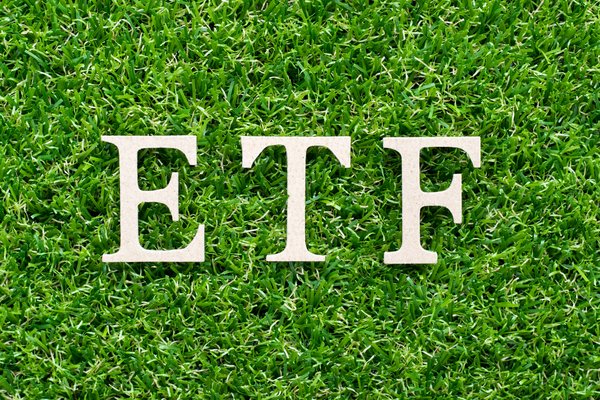The SPDR Dow Jones Industrial Average ETF Trust (DIA -0.28%) offers investors a unique way to gain exposure to one of the oldest and most iconic stock market indexes: the Dow Jones Industrial Average.
While most beginner investors are familiar with exchange-traded funds (ETFs) tracking the Nasdaq-100 or the S&P 500, the SPDR Dow Jones Industrial Average ETF Trust provides an alternative option for those seeking to invest in this time-tested benchmark.
Despite flying under the radar compared to its Nasdaq and S&P counterparts, this fund is a sizable and highly liquid ETF with distinct features that may appeal to certain types of investors.
If you’re interested in owning a portfolio of blue chip value stocks, this ETF could be worth considering. Here’s what you need to know.
What is the SPDR Dow Jones Industrial Average ETF (DIA)?
What is the SPDR Dow Jones Industrial Average ETF (DIA)?
The SPDR Dow Jones Industrial Average ETF Trust (DIA) is a passive ETF that tracks the Dow Jones Industrial Average, one of the oldest and most recognized stock market indexes in the world.
The index itself is a narrow benchmark of just 30 prominent U.S. companies, selected by a committee.
These companies are chosen based on subjective criteria, including their size, liquidity, profitability, and overall importance to the economy.
Unlike the S&P 500, the Dow Jones Industrial Average isn’t market cap-weighted. Instead, it uses a price-weighted methodology, meaning companies with higher share prices receive greater weight in the index.
While price weighting is considered an outdated indexing method, it remains a legacy carryover from the Dow’s early days when calculations were done manually with pen and paper.
Did You Know?
The SPDR Dow Jones Industrial Average ETF Trust (DIA) is structured as a Unit Investment Trust (UIT), a prototype ETF design. Unlike more modern ETFs, a UIT cannot reinvest dividends internally. Instead, it must hold dividends in cash until they are distributed to shareholders.
How to buy
How to buy the SPDR Dow Jones Industrial Average ETF Trust (DIA)
- Open your brokerage app: Log into your brokerage account where you handle your investments.
- Search for the ETF: Enter the ticker symbol “DIA” or the ETF name into the search bar to bring up the ETF’s trading page.
- Decide how many shares to buy: Consider your investment goals and how much of your portfolio you want to allocate to this ETF.
- Select order type: Choose between a market order to buy at the current price or a limit order to specify the maximum price you’re willing to pay.
- Submit your order: Confirm the details and submit your buy order.
- Review your purchase: Check your portfolio to ensure your order was filled as expected and adjust your investment strategy accordingly.
Holdings
Holdings of the SPDR Dow Jones Industrial Average ETF Trust (DIA)
Like the index it tracks, this ETF has just 30 holdings, making it significantly narrower in scope compared to broader benchmarks like the S&P 500 or Nasdaq-100.
Again, the Dow is price-weighted, so the largest companies by market capitalization don’t necessarily sit at the top of the index.
Sector allocation also differs, offering a more balanced exposure. The largest sectors are financials (23.9%), technology (20.6%), healthcare (15.36%), consumer discretionary (14%), and industrials (12.89%). The index does not include utilities or real estate by design.
Here are some of the top holdings in this ETF are as follows:
Should I invest?
Should I Invest in the SPDR Dow Jones Industrial Average ETF Trust (DIA)?
The Dow Jones Industrial Average is an outdated index that doesn’t hold up against modern benchmarks.
With only 30 stocks and a price-weighted structure, it lacks the diversification and sensibility of market cap-weighted indexes like the S&P 500.
For example, the SPDR S&P 500 ETF Trust (SPY -0.29%) provides exposure to 500 companies with a broader sector allocation and a methodology that better reflects the overall U.S. stock market.
That said, this Dow Jones ETF does have its niche uses. Some investors may find it appealing if they specifically want concentrated exposure to 30 blue chip stocks.
Additionally, it can serve as a useful trading tool for short-term strategies or as a tax loss harvesting partner for S&P 500 ETFs since the holdings overlap but aren’t identical.
For long-term investors, however, this SPDR fund is rarely the best ETF choice compared to broader and more diversified ETFs.
Dividend
Does the SPDR Dow Jones Industrial Average ETF Trust (DIA) pay a dividend?
This ETF pays a dividend. As of mid-January 2025, it had a 30-day SEC yield of 1.51%. Unlike many other equity ETFs that pay quarterly, DIA stands out by distributing dividends on a monthly basis.
Expense ratio
What is the SPDR Dow Jones Industrial Average ETF Trust (DIA)’s expense ratio?
This ETF has an expense ratio of 0.16%. An expense ratio represents the annual fee charged by the fund, expressed as a percentage of your investment.
This fee is not paid upfront; instead, it’s deducted from the fund’s returns, effectively reducing its performance over time.
For example, with an expense ratio of 0.16%, a $10,000 investment would cost you $16 per year.
While this might seem like a small amount, it adds up over time, especially when compared to lower-cost S&P 500 ETFs that go as low as 0.03%.
Annual fee as a percentage of assets that an Exchange-Traded Fund charges investors for management and operational costs.
Historical performance
Historical performance of the SPDR Dow Jones Industrial Average ETF Trust (DIA)
Here’s a look at how this ETF has performed over various trailing time periods. All figures represent total returns (i.e., with dividends reinvested).
|
Metric |
1-Year |
3-Year |
5-Year |
10-Year |
|---|---|---|---|---|
|
Net Asset Value |
14.79% |
7.38% |
10.39% |
11.39% |
|
Market Price |
14.79% |
7.39% |
10.40% |
11.39% |
Related investing topics
The bottom line
The bottom line on SPDR Dow Jones Industrial Average ETF Trust (DIA)
This Dow Jones ETF has several positives. It offers a portfolio of high-quality blue chip American stocks with a value tilt, pays monthly dividends, and boasts excellent liquidity and size.
That said, its drawbacks may outweigh the benefits for some. The lack of diversification, outdated price-weighting methodology, and a 0.16% expense ratio — while reasonable — are relatively high compared to more diversified and modern S&P 500 ETFs.
Ultimately, DIA may be better suited as a satellite holding or trading tool rather than a core portfolio investment.
FAQs
Investing in SPDR Dow Jones Industrial Average ETF Trust (DIA) FAQs
How to buy DIA ETF?
You can purchase the SPDR Dow Jones Industrial Average ETF Trust (DIA) through your brokerage account by searching for its ticker symbol and placing a buy order.
Should I invest in the Dow Jones Industrial Average ETF?
You should invest only if you’re comfortable with a portfolio of 30 price-weighted U.S. blue chip stocks.
Is DIA better than VOO?
Objectively, no. The SPDR Dow Jones Industrial Average ETF Trust (DIA) is less diversified and has a higher expense ratio compared to the Vanguard S&P 500 ETF (NYSEMKT:VOO).
Why invest in DIA?
You can invest for exposure to the most liquid U.S. large-cap stocks with a quality and value tilt, as well as for its monthly dividend payouts.



